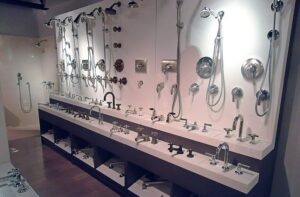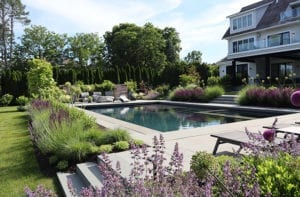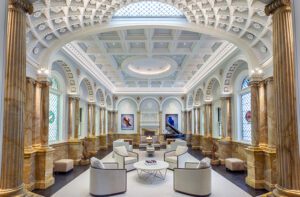Editor’s Miscellany: Urban Developments
July 4, 2013
By Kyle Hoepner
One wonderful quality of urban life is its ever-changing nature. Cities—healthy cities, that is, cities that exist because of the real needs and desires of their inhabitants, rather than some sort of political fiat—are always in flux, always adapting to the lives they house. Alterations may be relatively vast and glacial, as suburbs creep gradually outward or no-longer-relevant manufacturing centers decay; they may be tiny and quick, as new restaurants and pop-up shops open or apartment tenants change their balcony furniture. It’s the city as ecosystem, a bit analogous to a rain forest, with a large-scale infrastructure of trees hosting interlinked populations of animals, other plants, fungi, insects.

Rain forest in Ecuador’s Cayambe National Park. Photo by Gunter Ziesler, from unep.org
In keeping with this metaphor, I suppose you could say that the fun and thoughtful exhibition currently on view at the Boston Society of Architects BSA Space celebrates the forest’s lianas, epiphytes, bower birds and such: those symbionts and scavengers who turn the detritus of past development into design fuel for new purposes, reclaiming and repurposing bits and pieces of their world or simply adapting to take advantage of the myriad random nooks and crannies created by the growth and activity of their larger neighbors.

Photo at exhibition entry
Urban design advocate and former Boston University student Scott Burnham has returned after sixteen years of professional engagement in cities around the world to curate Reprogramming the City: Opportunities for Urban Infrastructure, open through September 29 at 290 Congress Street in Boston. As Burnham notes, “Designers, architects, and cities themselves are realizing that in an era of limited resources, there is a vast amount of untapped potential in the existing physical stock of the city. A new approach of designing with the existing materials of the city is bringing a new resourcefulness and sense of opportunity to the urban landscape. This new spirit and attitude is not only expanding the functionality of urban objects and areas but [also] increasing the creative spirit of the city itself.”
The ideas and objects incorporated into Burnham’s show are highly diverse, and while I do appreciate the wit and thought-provoking nature of some projects on display—one, for example, a sort of High Line spinoff proposing to turn London’s abandoned industrial canals into cross-city “commuter swimming lanes;” another embedding QR codes into Lisbon’s paving stones for purposes that frankly seem a bit fuzzy to me—I’ll focus here on some of the more modest, practical notions that tend to be dearer to my heart.
The Cascade, by Edge Design Institute. This furniture-sculpture transforms a pedestrian (pun intended) Hong Kong stairway into a lively, extremely functional pocket park. I can easily see cheap and flexible installations such as this clinging, barnacle-like, to urban spaces of all kinds, retrofitting them to better serve their full potential for street life and enlivening the urban fabric.

Photo by Scott Burnham, courtesy of the Boston Society of Architects
The show includes two other, more specialized versions of the same basic concept: first a full-scale installation of Softwalks, by Bland Hoke and Howard Chambers, clamp-on public amenities that will resonate with anyone who has recently experienced New York City’s infestation of semi-permanent building scaffolding…

Photo courtesy of the Boston Society of Architects
…and later Jean-Baptiste Hardoin’s La Grande Cantine, designed to enhance the usability and personal-interaction possibilities of already well-meaning waterfront parks. (It turns out people often prefer to face one another rather than always face the view.)


2012 installation at Paris’s Esplanade de la Défense. Drawing and photo from jbhardoin.fr
Electricity-generating paving tiles, by Pavegen Systems. These piezoelectric (I assume) tiles are designed to be installed in high-traffic public areas and harvest the natural force of human footsteps to generate significant amounts of electricity.

Pavegen installation at London’s West Ham Underground station that powered lighting for a temporary footbridge during the 2012 Summer Olympics. Photo from pavegen.com
Los Angeles artist Stephen Glassman’s Urban Air initiative intends to transform urban billboard structures into air-cleaning, carbon-eating bamboo gardens.

Photo from stephenglassmanstudio.net
The University of Engineering and Technology (UTEC) in Lima, Peru, outfitted a billboard along the Pan-American Highway with reverse-osmosis technology to convert this extremely arid region’s extremely moist air (relative humidity frequently runs more than 90% in a city that gets 2.4 inches or fewer of rainfall a year) into a source of unpolluted drinking water for poor neighborhoods.

Photo from gizmag.com
HAWSE, by Levitt Bernstein. This is a project to convert parking garage units—common to private and public housing estates throughout London and often sitting unused—into micro-housing for the homeless or others, such as early-career police, EMTs and firefighters, who are priced out of many neighborhoods.



Photo and renderings courtesy of the Boston Society of Architects
Reprogramming the City includes many more ingenious adaptations and re-imaginings than I can show here (for one, an Austrian initiative converting unused telephone booths into charging stations for electric cars). Not all of them are entirely practical, and the show doesn’t fully examine potential roadblocks like ownership issues, permitting and cost-effectiveness. But overall an impressively resourceful array of ideas is on offer.
I highly recommend a visit.
Share
![NEH-Logo_Black[1] NEH-Logo_Black[1]](https://www.nehomemag.com/wp-content/uploads/2022/08/NEH-Logo_Black1-300x162.jpg)







